Wenxuan Pan
Fusing Bluetooth with Pedestrian Dead Reckoning: A Floor Plan-Assisted Positioning Approach
Apr 14, 2025Abstract:Floor plans can provide valuable prior information that helps enhance the accuracy of indoor positioning systems. However, existing research typically faces challenges in efficiently leveraging floor plan information and applying it to complex indoor layouts. To fully exploit information from floor plans for positioning, we propose a floor plan-assisted fusion positioning algorithm (FP-BP) using Bluetooth low energy (BLE) and pedestrian dead reckoning (PDR). In the considered system, a user holding a smartphone walks through a positioning area with BLE beacons installed on the ceiling, and can locate himself in real time. In particular, FP-BP consists of two phases. In the offline phase, FP-BP programmatically extracts map features from a stylized floor plan based on their binary masks, and constructs a mapping function to identify the corresponding map feature of any given position on the map. In the online phase, FP-BP continuously computes BLE positions and PDR results from BLE signals and smartphone sensors, where a novel grid-based maximum likelihood estimation (GML) algorithm is introduced to enhance BLE positioning. Then, a particle filter is used to fuse them and obtain an initial estimate. Finally, FP-BP performs post-position correction to obtain the final position based on its specific map feature. Experimental results show that FP-BP can achieve a real-time mean positioning accuracy of 1.19 m, representing an improvement of over 28% compared to existing floor plan-fused baseline algorithms.
Continual Learning of Multiple Cognitive Functions with Brain-inspired Temporal Development Mechanism
Apr 08, 2025Abstract:Cognitive functions in current artificial intelligence networks are tied to the exponential increase in network scale, whereas the human brain can continuously learn hundreds of cognitive functions with remarkably low energy consumption. This advantage is in part due to the brain cross-regional temporal development mechanisms, where the progressive formation, reorganization, and pruning of connections from basic to advanced regions, facilitate knowledge transfer and prevent network redundancy. Inspired by these, we propose the Continual Learning of Multiple Cognitive Functions with Brain-inspired Temporal Development Mechanism(TD-MCL), enabling cognitive enhancement from simple to complex in Perception-Motor-Interaction(PMI) multiple cognitive task scenarios. The TD-MCL model proposes the sequential evolution of long-range connections between different cognitive modules to promote positive knowledge transfer, while using feedback-guided local connection inhibition and pruning to effectively eliminate redundancies in previous tasks, reducing energy consumption while preserving acquired knowledge. Experiments show that the proposed method can achieve continual learning capabilities while reducing network scale, without introducing regularization, replay, or freezing strategies, and achieving superior accuracy on new tasks compared to direct learning. The proposed method shows that the brain's developmental mechanisms offer a valuable reference for exploring biologically plausible, low-energy enhancements of general cognitive abilities.
Evolving Efficient Genetic Encoding for Deep Spiking Neural Networks
Nov 11, 2024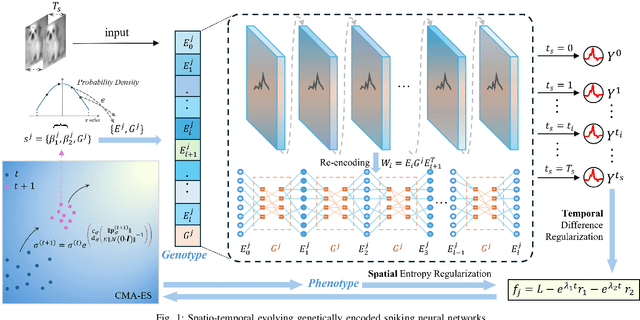
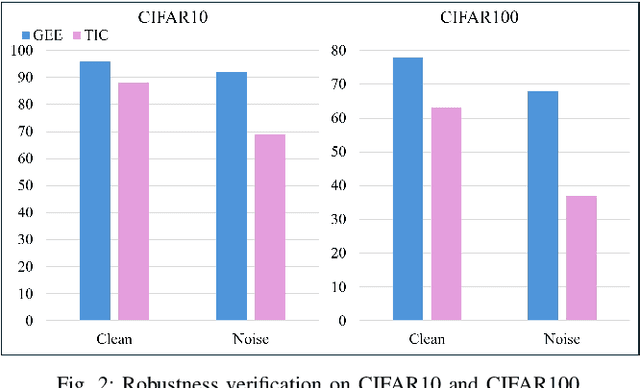
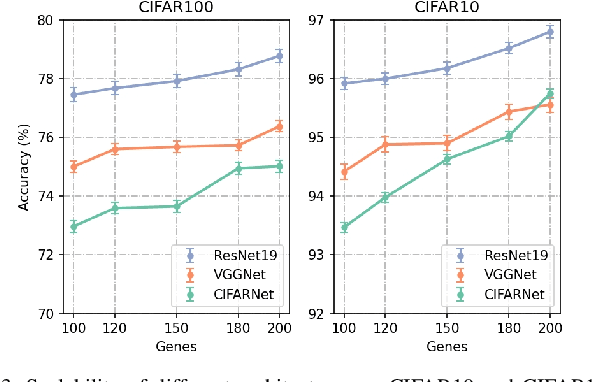
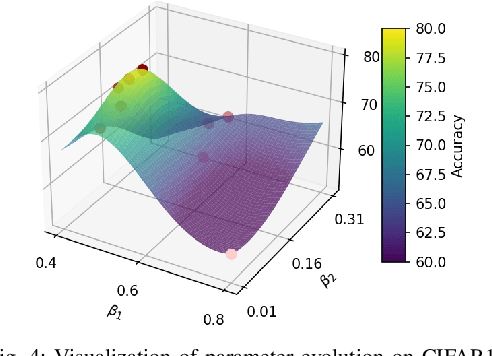
Abstract:By exploiting discrete signal processing and simulating brain neuron communication, Spiking Neural Networks (SNNs) offer a low-energy alternative to Artificial Neural Networks (ANNs). However, existing SNN models, still face high computational costs due to the numerous time steps as well as network depth and scale. The tens of billions of neurons and trillions of synapses in the human brain are developed from only 20,000 genes, which inspires us to design an efficient genetic encoding strategy that dynamic evolves to regulate large-scale deep SNNs at low cost. Therefore, we first propose a genetically scaled SNN encoding scheme that incorporates globally shared genetic interactions to indirectly optimize neuronal encoding instead of weight, which obviously brings about reductions in parameters and energy consumption. Then, a spatio-temporal evolutionary framework is designed to optimize the inherently initial wiring rules. Two dynamic regularization operators in the fitness function evolve the neuronal encoding to a suitable distribution and enhance information quality of the genetic interaction respectively, substantially accelerating evolutionary speed and improving efficiency. Experiments show that our approach compresses parameters by approximately 50\% to 80\%, while outperforming models on the same architectures by 0.21\% to 4.38\% on CIFAR-10, CIFAR-100 and ImageNet. In summary, the consistent trends of the proposed genetically encoded spatio-temporal evolution across different datasets and architectures highlight its significant enhancements in terms of efficiency, broad scalability and robustness, demonstrating the advantages of the brain-inspired evolutionary genetic coding for SNN optimization.
Brain-inspired and Self-based Artificial Intelligence
Feb 29, 2024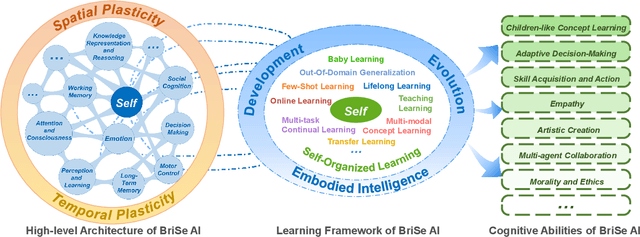
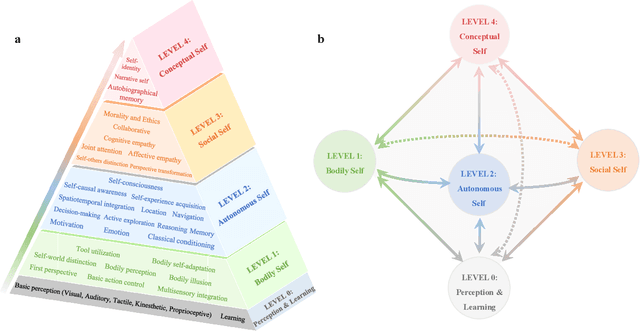
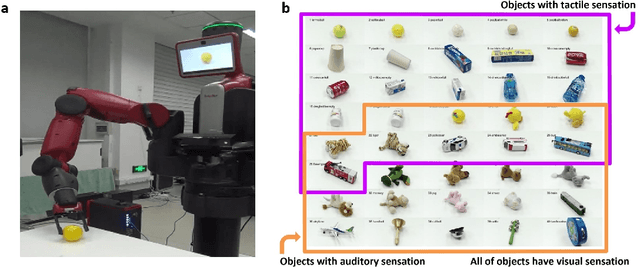
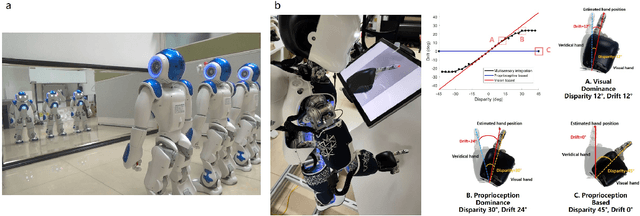
Abstract:The question "Can machines think?" and the Turing Test to assess whether machines could achieve human-level intelligence is one of the roots of AI. With the philosophical argument "I think, therefore I am", this paper challenge the idea of a "thinking machine" supported by current AIs since there is no sense of self in them. Current artificial intelligence is only seemingly intelligent information processing and does not truly understand or be subjectively aware of oneself and perceive the world with the self as human intelligence does. In this paper, we introduce a Brain-inspired and Self-based Artificial Intelligence (BriSe AI) paradigm. This BriSe AI paradigm is dedicated to coordinating various cognitive functions and learning strategies in a self-organized manner to build human-level AI models and robotic applications. Specifically, BriSe AI emphasizes the crucial role of the Self in shaping the future AI, rooted with a practical hierarchical Self framework, including Perception and Learning, Bodily Self, Autonomous Self, Social Self, and Conceptual Self. The hierarchical framework of the Self highlights self-based environment perception, self-bodily modeling, autonomous interaction with the environment, social interaction and collaboration with others, and even more abstract understanding of the Self. Furthermore, the positive mutual promotion and support among multiple levels of Self, as well as between Self and learning, enhance the BriSe AI's conscious understanding of information and flexible adaptation to complex environments, serving as a driving force propelling BriSe AI towards real Artificial General Intelligence.
Adaptive Reorganization of Neural Pathways for Continual Learning with Hybrid Spiking Neural Networks
Sep 18, 2023Abstract:The human brain can self-organize rich and diverse sparse neural pathways to incrementally master hundreds of cognitive tasks. However, most existing continual learning algorithms for deep artificial and spiking neural networks are unable to adequately auto-regulate the limited resources in the network, which leads to performance drop along with energy consumption rise as the increase of tasks. In this paper, we propose a brain-inspired continual learning algorithm with adaptive reorganization of neural pathways, which employs Self-Organizing Regulation networks to reorganize the single and limited Spiking Neural Network (SOR-SNN) into rich sparse neural pathways to efficiently cope with incremental tasks. The proposed model demonstrates consistent superiority in performance, energy consumption, and memory capacity on diverse continual learning tasks ranging from child-like simple to complex tasks, as well as on generalized CIFAR100 and ImageNet datasets. In particular, the SOR-SNN model excels at learning more complex tasks as well as more tasks, and is able to integrate the past learned knowledge with the information from the current task, showing the backward transfer ability to facilitate the old tasks. Meanwhile, the proposed model exhibits self-repairing ability to irreversible damage and for pruned networks, could automatically allocate new pathway from the retained network to recover memory for forgotten knowledge.
Brain-inspired Evolutionary Architectures for Spiking Neural Networks
Sep 11, 2023



Abstract:The complex and unique neural network topology of the human brain formed through natural evolution enables it to perform multiple cognitive functions simultaneously. Automated evolutionary mechanisms of biological network structure inspire us to explore efficient architectural optimization for Spiking Neural Networks (SNNs). Instead of manually designed fixed architectures or hierarchical Network Architecture Search (NAS), this paper evolves SNNs architecture by incorporating brain-inspired local modular structure and global cross-module connectivity. Locally, the brain region-inspired module consists of multiple neural motifs with excitatory and inhibitory connections; Globally, we evolve free connections among modules, including long-term cross-module feedforward and feedback connections. We further introduce an efficient multi-objective evolutionary algorithm based on a few-shot performance predictor, endowing SNNs with high performance, efficiency and low energy consumption. Extensive experiments on static datasets (CIFAR10, CIFAR100) and neuromorphic datasets (CIFAR10-DVS, DVS128-Gesture) demonstrate that our proposed model boosts energy efficiency, archiving consistent and remarkable performance. This work explores brain-inspired neural architectures suitable for SNNs and also provides preliminary insights into the evolutionary mechanisms of biological neural networks in the human brain.
Enhancing Efficient Continual Learning with Dynamic Structure Development of Spiking Neural Networks
Aug 09, 2023Abstract:Children possess the ability to learn multiple cognitive tasks sequentially, which is a major challenge toward the long-term goal of artificial general intelligence. Existing continual learning frameworks are usually applicable to Deep Neural Networks (DNNs) and lack the exploration on more brain-inspired, energy-efficient Spiking Neural Networks (SNNs). Drawing on continual learning mechanisms during child growth and development, we propose Dynamic Structure Development of Spiking Neural Networks (DSD-SNN) for efficient and adaptive continual learning. When learning a sequence of tasks, the DSD-SNN dynamically assigns and grows new neurons to new tasks and prunes redundant neurons, thereby increasing memory capacity and reducing computational overhead. In addition, the overlapping shared structure helps to quickly leverage all acquired knowledge to new tasks, empowering a single network capable of supporting multiple incremental tasks (without the separate sub-network mask for each task). We validate the effectiveness of the proposed model on multiple class incremental learning and task incremental learning benchmarks. Extensive experiments demonstrated that our model could significantly improve performance, learning speed and memory capacity, and reduce computational overhead. Besides, our DSD-SNN model achieves comparable performance with the DNNs-based methods, and significantly outperforms the state-of-the-art (SOTA) performance for existing SNNs-based continual learning methods.
Multi-scale Evolutionary Neural Architecture Search for Deep Spiking Neural Networks
Apr 21, 2023Abstract:Spiking Neural Networks (SNNs) have received considerable attention not only for their superiority in energy efficient with discrete signal processing, but also for their natural suitability to integrate multi-scale biological plasticity. However, most SNNs directly adopt the structure of the well-established DNN, rarely automatically design Neural Architecture Search (NAS) for SNNs. The neural motifs topology, modular regional structure and global cross-brain region connection of the human brain are the product of natural evolution and can serve as a perfect reference for designing brain-inspired SNN architecture. In this paper, we propose a Multi-Scale Evolutionary Neural Architecture Search (MSE-NAS) for SNN, simultaneously considering micro-, meso- and macro-scale brain topologies as the evolutionary search space. MSE-NAS evolves individual neuron operation, self-organized integration of multiple circuit motifs, and global connectivity across motifs through a brain-inspired indirect evaluation function, Representational Dissimilarity Matrices (RDMs). This training-free fitness function could greatly reduce computational consumption and NAS's time, and its task-independent property enables the searched SNNs to exhibit excellent transferbility and scalability. Extensive experiments demonstrate that the proposed algorithm achieves state-of-the-art (SOTA) performance with shorter simulation steps on static datasets (CIFAR10, CIFAR100) and neuromorphic datasets (CIFAR10-DVS and DVS128-Gesture). The thorough analysis also illustrates the significant performance improvement and consistent bio-interpretability deriving from the topological evolution at different scales and the RDMs fitness function.
Adaptive structure evolution and biologically plausible synaptic plasticity for recurrent spiking neural networks
Mar 31, 2023Abstract:The architecture design and multi-scale learning principles of the human brain that evolved over hundreds of millions of years are crucial to realizing human-like intelligence. Spiking Neural Network (SNN) based Liquid State Machine (LSM) serves as a suitable architecture to study brain-inspired intelligence because of its brain-inspired structure and the potential for integrating multiple biological principles. Existing researches on LSM focus on different certain perspectives, including high-dimensional encoding or optimization of the liquid layer, network architecture search, and application to hardware devices. There is still a lack of in-depth inspiration from the learning and structural evolution mechanism of the brain. Considering these limitations, this paper presents a novel LSM learning model that integrates adaptive structural evolution and multi-scale biological learning rules. For structural evolution, an adaptive evolvable LSM model is developed to optimize the neural architecture design of liquid layer with separation property. For brain-inspired learning of LSM, we propose a dopamine-modulated Bienenstock-Cooper-Munros (DA-BCM) method that incorporates global long-term dopamine regulation and local trace-based BCM synaptic plasticity. Comparative experimental results on different decision-making tasks show that introducing structural evolution of the liquid layer, and the DA-BCM regulation of the liquid layer and the readout layer could improve the decision-making ability of LSM and flexibly adapt to rule reversal. This work is committed to exploring how evolution can help to design more appropriate network architectures and how multi-scale neuroplasticity principles coordinated to enable the optimization and learning of LSMs for relatively complex decision-making tasks.
Adaptive Sparse Structure Development with Pruning and Regeneration for Spiking Neural Networks
Nov 22, 2022Abstract:Spiking Neural Networks (SNNs) are more biologically plausible and computationally efficient. Therefore, SNNs have the natural advantage of drawing the sparse structural plasticity of brain development to alleviate the energy problems of deep neural networks caused by their complex and fixed structures. However, previous SNNs compression works are lack of in-depth inspiration from the brain development plasticity mechanism. This paper proposed a novel method for the adaptive structural development of SNN (SD-SNN), introducing dendritic spine plasticity-based synaptic constraint, neuronal pruning and synaptic regeneration. We found that synaptic constraint and neuronal pruning can detect and remove a large amount of redundancy in SNNs, coupled with synaptic regeneration can effectively prevent and repair over-pruning. Moreover, inspired by the neurotrophic hypothesis, neuronal pruning rate and synaptic regeneration rate were adaptively adjusted during the learning-while-pruning process, which eventually led to the structural stability of SNNs. Experimental results on spatial (MNIST, CIFAR-10) and temporal neuromorphic (N-MNIST, DVS-Gesture) datasets demonstrate that our method can flexibly learn appropriate compression rate for various tasks and effectively achieve superior performance while massively reducing the network energy consumption. Specifically, for the spatial MNIST dataset, our SD-SNN achieves 99.51\% accuracy at the pruning rate 49.83\%, which has a 0.05\% accuracy improvement compared to the baseline without compression. For the neuromorphic DVS-Gesture dataset, 98.20\% accuracy with 1.09\% improvement is achieved by our method when the compression rate reaches 55.50\%.
 Add to Chrome
Add to Chrome Add to Firefox
Add to Firefox Add to Edge
Add to Edge